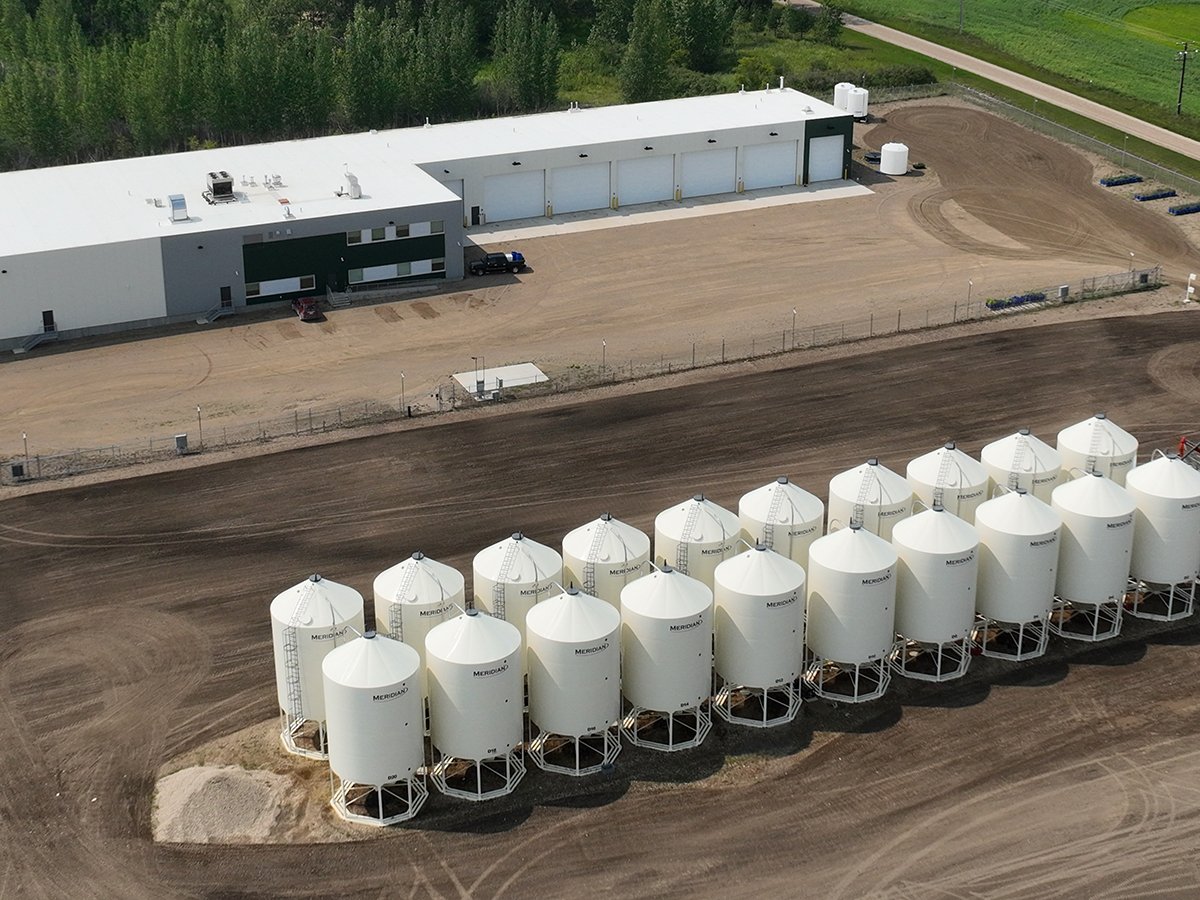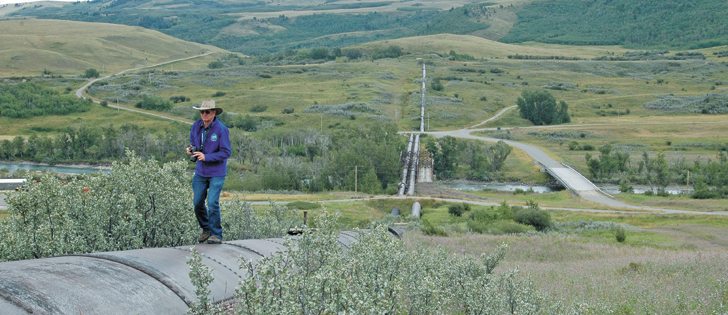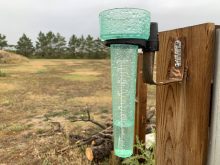Milk River’s aging infrastructure that delivers water for cattle, irrigators and communities is is desperate need of repair
MILK RIVER, Alta. — The phrase can’t help but give pause to water users of the Milk River and St. Mary River on both sides of the Canada-U.S. border.
That phrase is “fix upon fail.”
It means that when the infrastructure system fails in its task of ensuring stable water flow into the Milk River as it meanders from the United States into Canada and back into the U.S. again, it will be fixed.
But the funding and direction needed to upgrade or replace aging structures built in the early 1900s have not been provided by U.S. state and federal governments.
Read Also

Saskatchewan firm aims to fix soil with compost pellets
In his business, Humaterra, Leon Pratchler is helping farmers maximize yields in the weakest areas of their fields through the use of a compost pellet.
“The infrastructure has needed upgrading for probably at least 20 or 30 years and so far it hasn’t been upgraded,” said John Ross, chair of the Milk River Watershed Council.
“They’re just patching it. As far as Canada is concerned, there’s three facilities down there — Sherburne dam, the actual diversion of the water out of the St. Mary’s into the Milk River and then the inverted siphons — that are way past their life span.”
Under the terms of an international agreement, Canada receives 75 percent of the St. Mary River flow during the irrigation season and 25 percent of the Milk River flow in that same season, up to a maximum of 666 cubic feet per second in the Milk.
However, that level of flow in the Milk River is dependent upon diversion of water from the St. Mary into a canal system and through a set of siphons.
“They were built around, say, 1910 … and they’re basically falling apart,” said Ross, who saw the structures in early August while on a transboundary tour of weed and water management.
“If any one of those happens to fail catastrophically, we are not going to get the water in Alberta for the summer, so the irrigators will be out of water. There’ll be no water for the cattle. There’ll be no water for fish in the rivers, and just as importantly or more, there’s no water for the towns of Milk River and Coutts. And they have nowhere to get it from. There’s a real danger right there, right now.”
The infrastructure is all in Montana, some of it on the Blackfeet Nation property near Babb. Ross said permits and plans were in place a few years ago to upgrade the diversion structure but when funding wasn’t available, the permits expired.
The projects would be expensive. Ross estimates upgrades to the diversion structure alone would cost $40 million and upgrading the siphons could be $100 million or more.
The Milk River also supplies water users in Montana. Once it weaves in and out of Canada, the river flows through the Fresno Reservoir to Havre and all the way through Glasgow before joining the Missouri River system and eventually the Gulf of Mexico.
About 140,000 acres are irrigated from the river system on the Montana side.
Mike Hilliard, a division manager with the bureau of reclamation in Montana, said the age of the infrastructure is a concern.
He is one of the people tasked with monitoring and repairing it.
“This is an old system. It’s 100 years old. It hasn’t been maintained very well the last 100 years. There’s been patches here and there, Band-Aids that have been put along,” he said.
“If this system fails, or if this system has issues, getting water onto the Milk River system is not going to be pretty.”
Hilliard said part of the challenge in doing repairs is the need to get approval from a joint board of control before proceeding. That board foots 75 percent of any costs, so it has a keen interest in any work done.
Hilliard said the system was set up as a “single source irrigation project,” with the joint board as a primary beneficiary.However, the system’s benefits go well beyond that, he added, and the joint board is now working with the Blackfeet Nation and other groups to adjust cost allocations.
“I can’t stress enough (that) this is the lifeblood of the high line and also in the Canadian portions too,” said Hilliard.
“It provides a lot of support for farmers and irrigators alike and municipalities also.”
Loren Bird Rattler, project manager for the Blackfeet Tribe’s agriculture resource management plan, acknowledged the role the tribe must play in ensuring water supplies.
“For us here upstream, we’re doing the best that we can to ensure that you downstream have the opportunity and can utilize the water more efficiently, so that means upgrades to our infrastructure, upgrades to many areas,” said Bird Rattler.
“Those are projects that we’re certainly working on identifying, figuring out how we’re going to get those paid for.”
Jim Bester, a civil engineer with long experience in water management infrastructure who was on the recent tour, said he isn’t surprised that the diversion and siphons built in the early 1900s continue to do their jobs.
He said things were built to last back then, “and it’s been good that they have, but the problem is vulnerability.”
In his view, the diversion structure would have to be replaced rather than updated or repaired because of its age, gate structure, concrete condition and dimensions.
As for the siphon system, “that does not have long-term life as is,” Bester said.
“It can be armoured and give it an extended life. It could be lined on the inside, reinforced on the outside. There’s ways to do that. But probably what they should do is reconstruct that river crossing conduit.”
Whether or not that happens, Ross said building on-stream storage on the Milk River on the Canadian side would provide more stability for water users.
“We are hoping for some form of on-stream storage so that we could actually hold some water back. If there’s a small failure (of Montana infrastructure), we can actually have water and augment the river downstream for fish habitat and also for the town of Milk River and possibly the irrigators if we had enough water,” Ross said.
Many studies have been done on that proposal. Ross and watershed executive director Tim Romanow said there continues to be potential.
“It feels like the time is right. There’s been investigations for storage on the Alberta side of the Milk River for 100 years now,” said Romanow.
“There hasn’t been a very strong appetite over those years for one reason or another.”
Compliance with international water sharing agreements is one issue, as is concern about the environment when any river is dammed.
Ross said the latter concern has been addressed in numerous studies on the dam proposal and through the watershed’s regional plan.
“The Milk River is probably the most highly disturbed river of any one in Alberta. It’s actually had inter-basin transfer from the St. Mary into the Milk for over 100 years. This is the new norm,” he said.
“There’s a real need for on-stream storage. There’s been studies that show it would be beneficial. I guess now we need the will and the money to actually go and do it.”
















